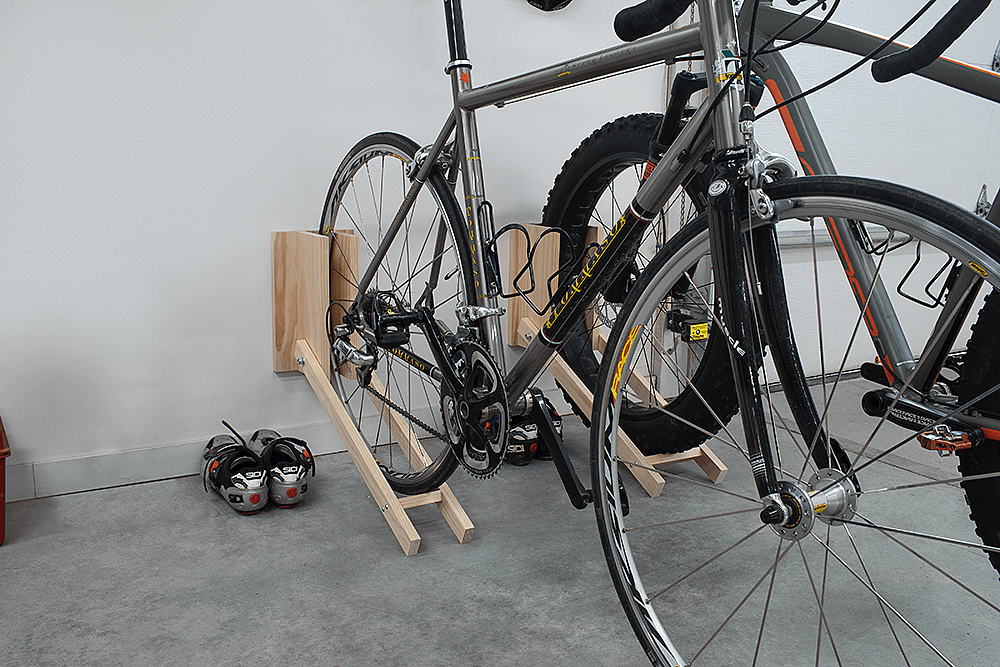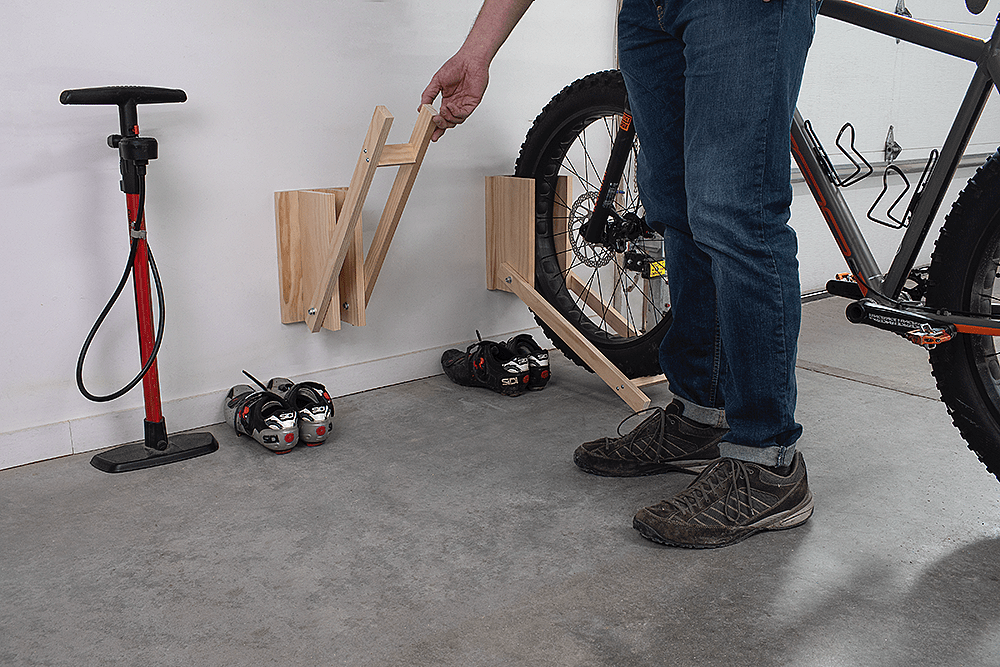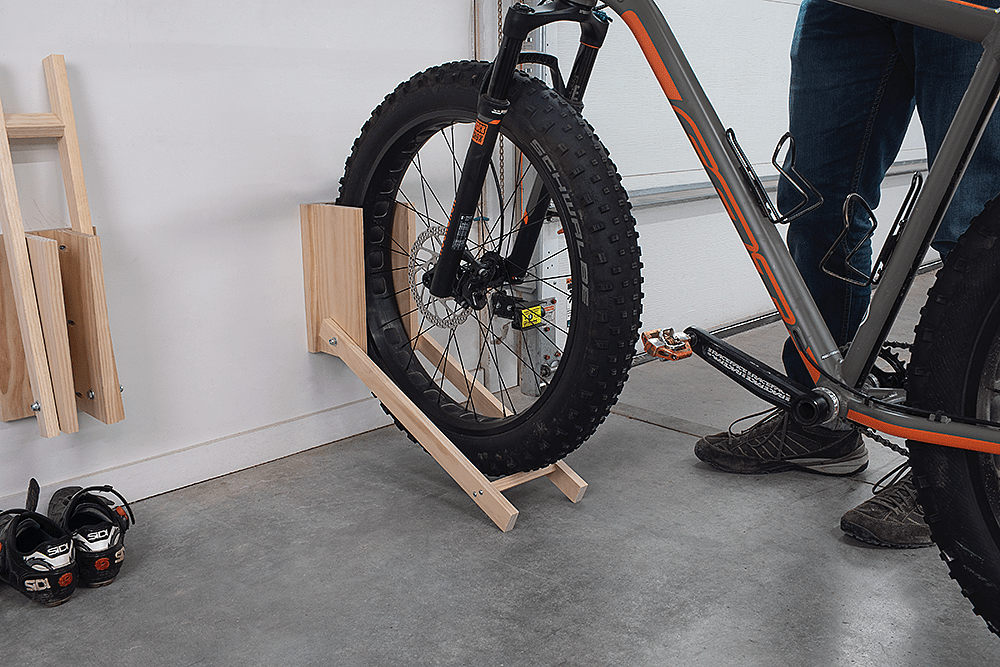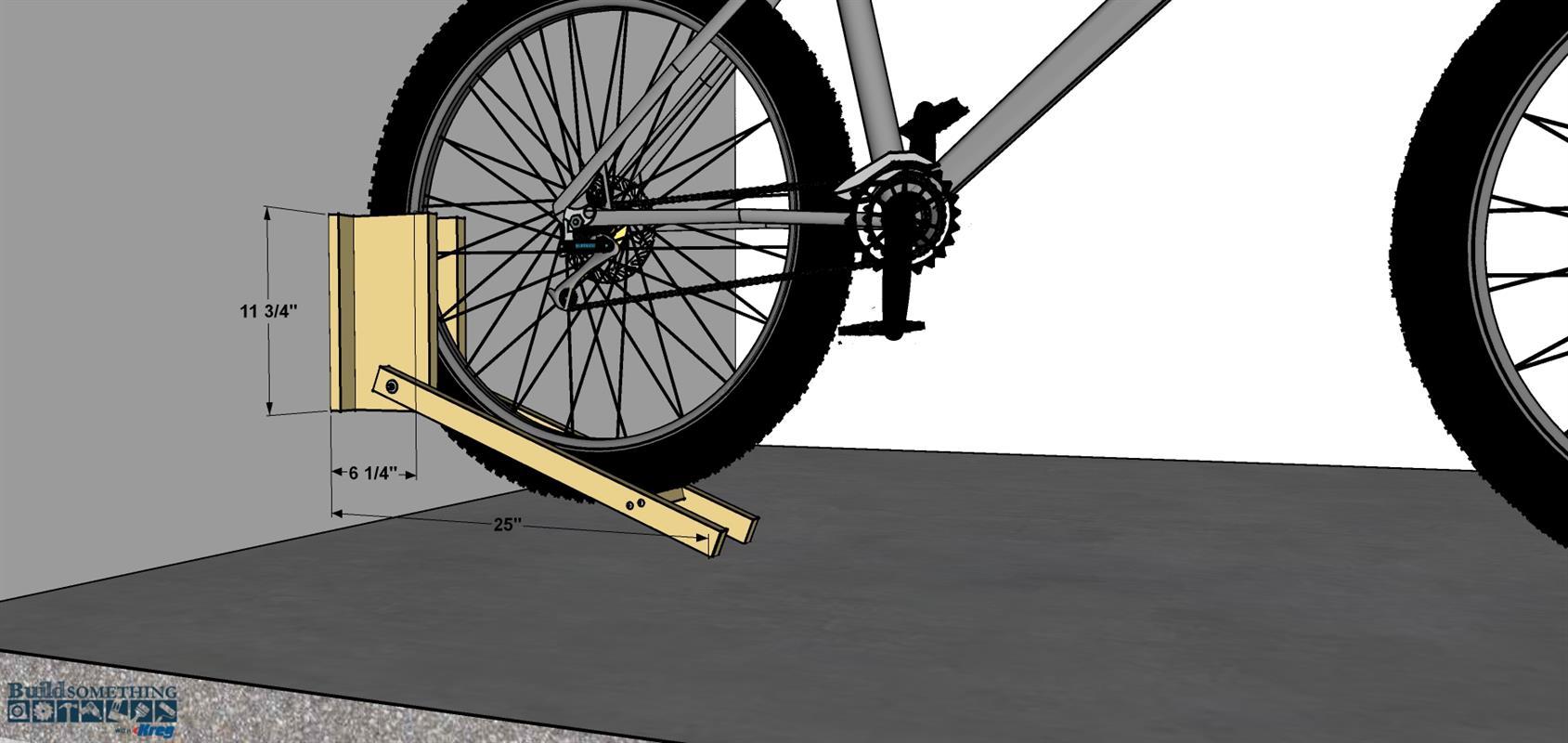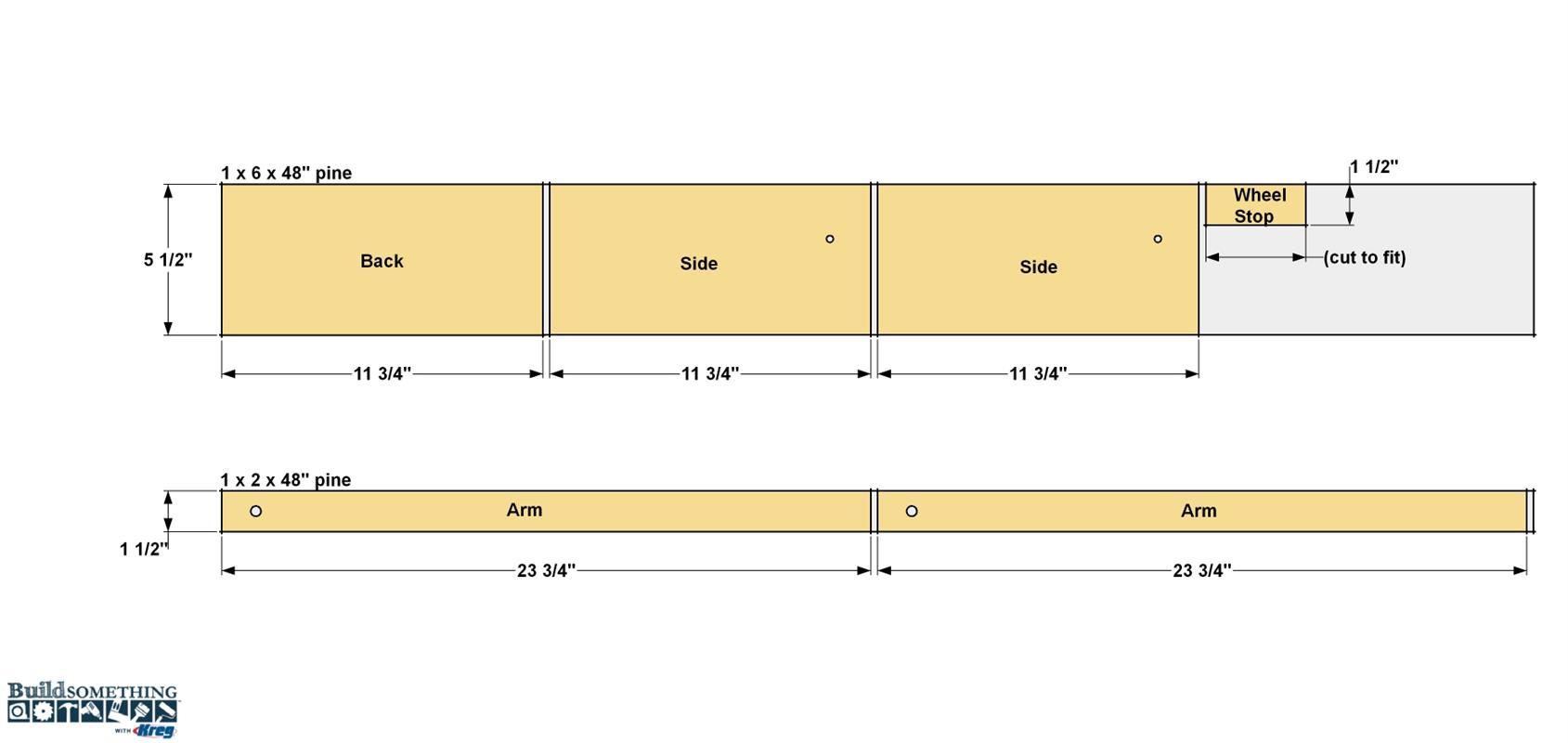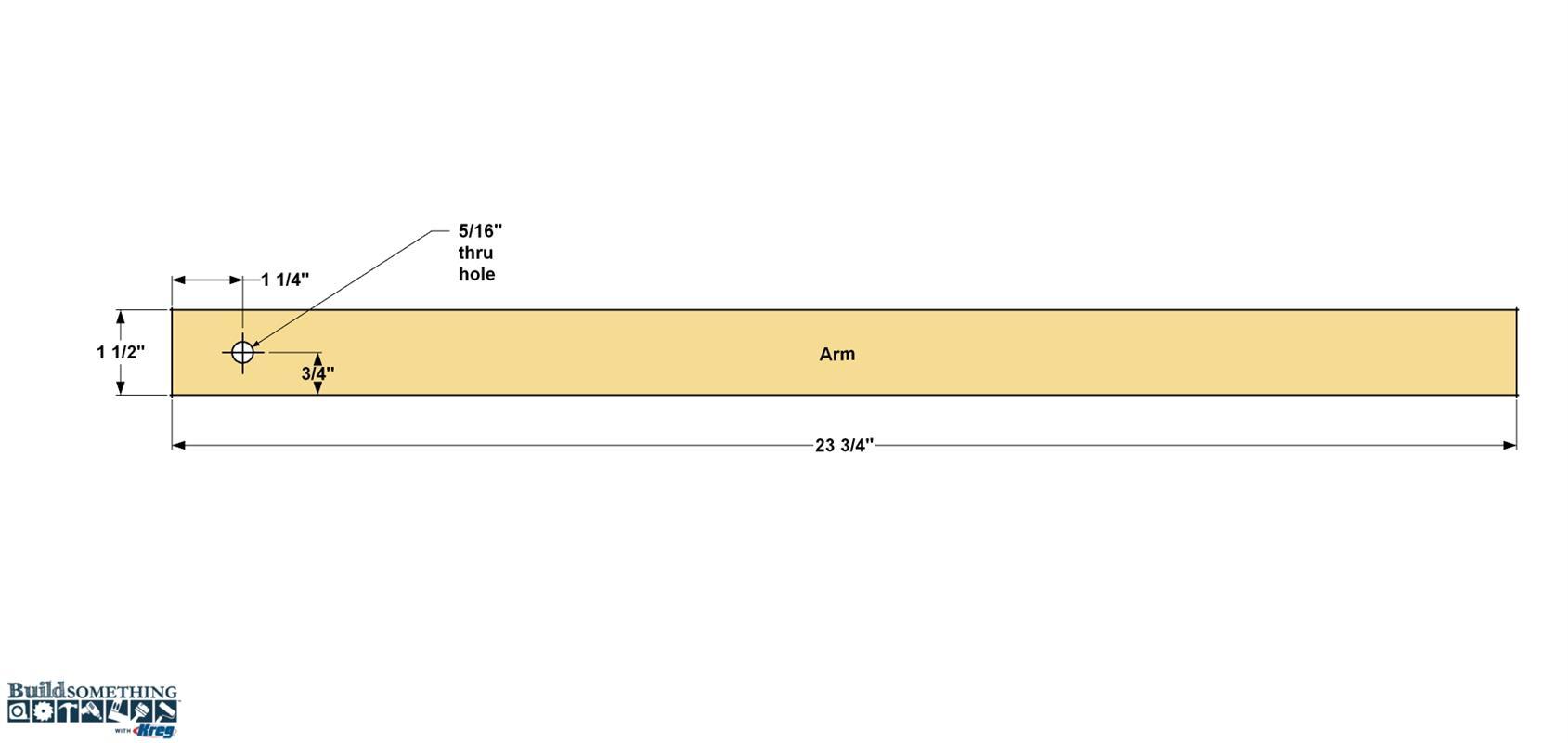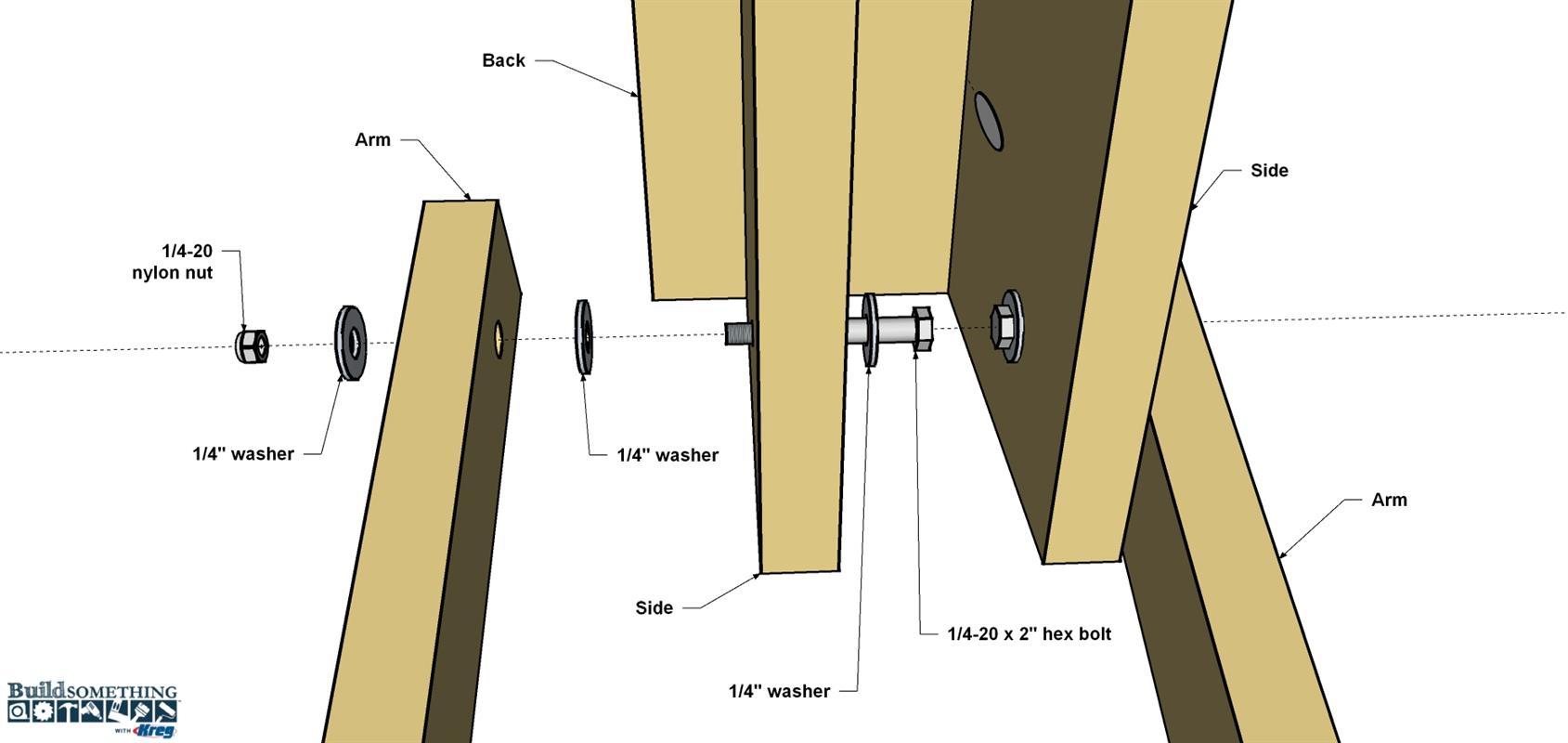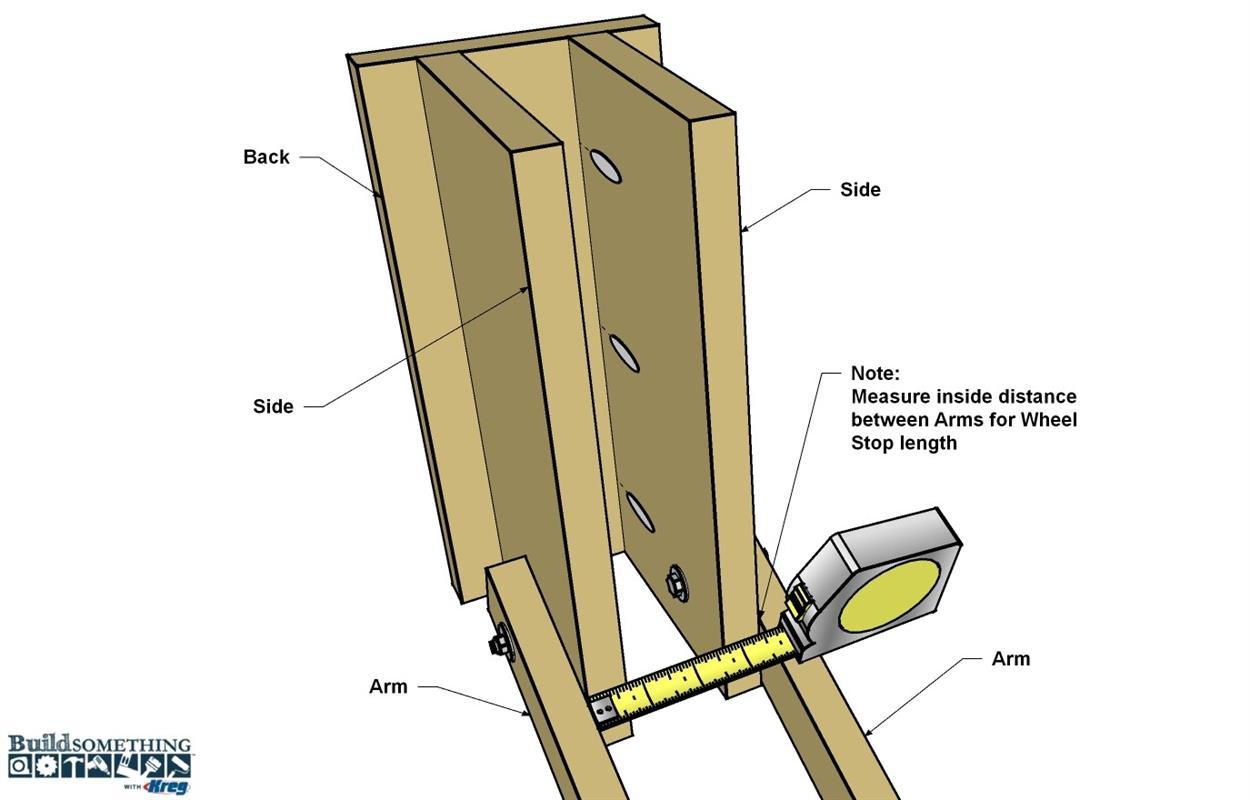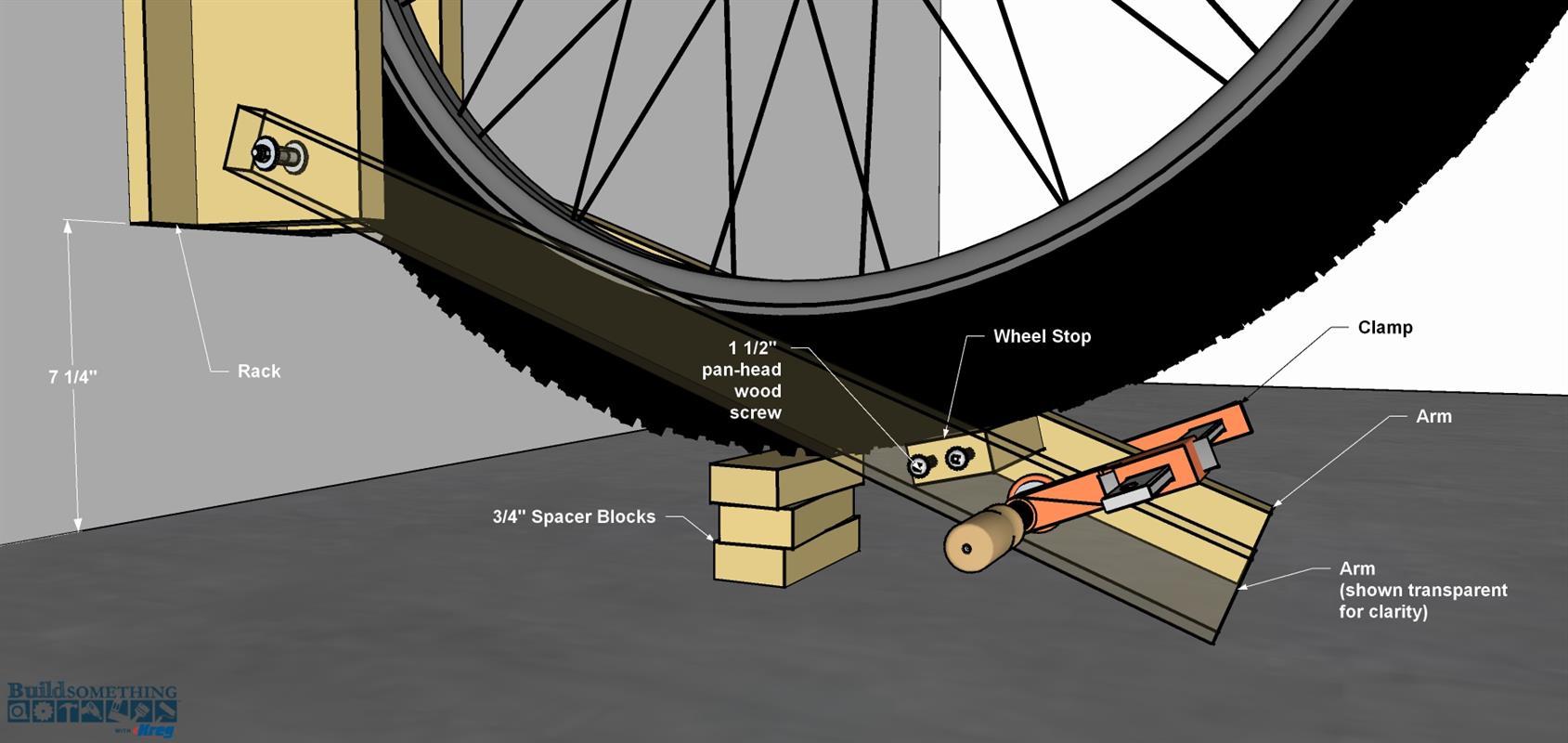Compact Garage Bike Rack
By Kreg ToolBikes leaning against the wall can quickly lead to a chaotic garage and to damaged bikes. Now you can store your bikes properly and take back your garage space by creating your own bike storage rack. It’s super easy to build from a couple boards, and easy to customize to cradle fat or skinny tires.
Directions
-
Make the Sides and Back
Start by cutting two Sides and one Back to size from a 1x6 board, as shown in the cutting diagram. Set the Back aside for the moment. On the two Sides, set your Kreg Pocket-Hole Jig for 3/4"-thick material, and then drill pocket holes at the locations shown. After drilling the pocket holes, lay out the bolt hole. This is where the Arms will attach. Sandwich the two Sides together so the edges are flush. Clamp them to a scrap piece of wood, and then drill a 5/16" hole through both of the Sides. Sand the parts smooth.
-
Space and Attach the Sides
Sandwich the tire of the bike you intend to store between the Sides. Measure between the Sides, and then add 1/2" to the measurement. Position the Sides on the Back so they have this distance between them, and so they are roughly centered on the width of the Back. If you don’t have much space between the Sides (your bike has skinny tires) you’ll need to have the pocket holes face outward on the Sides to get to them with a driver bit. For wider tires, you can face the pocket holes inward. For skinny tires, you’ll also need to slip the arm-mounting bolts (with a washer) into the holes in the Sides before you attach them. Once you have the Sides positioned, attach them to the Back using glue and 1 1/4" coarse-thread Kreg Pocket-Hole Screws.
-
Cut the Arms
Now, cut the Arms to length, as shown in the cut diagram. Lay out the hole location on one of the Arms, and then drill the holes in both Arms the same way you did for the Sides. Then sand the Arms smooth.
-
Attach the Arms
If you haven’t already inserted the bolts in Step 2, you can now slip the bolts into the holes in the Sides, as shown. Add a second washer on the outer face of each side, then slip the Ram on each bolt. Finally, slide a third washer on each bolt, as shown, and the nylon hex nut. Tighten each nut until the Arm pivots on the bolt with little resistance, but doesn’t have excess play.
-
Cut the Wheel Stop to Length
To determine the length of the Wheel Stop, measure the space between the Arms at the edge of the Sides, then cut one Wheel Stop to that length. Sand it smooth.
-
Set the Wheel Stop
Place the rack against a wall and space it 7 1/4" off the floor (you can use a scrap piece of 1x8 set sideways). Stack three, 3/4" pieces of scrap wood and then set the bike in place as shown. Position the Wheel Stop so it sits flat against the bike tire, as shown. Clamp the Wheel Stop in place, and then move the bike out of the way. Drill two 1/16" pilot holes through each Arm and into the ends of the Wheel Stop. Remove the clamp, spread glue on the ends of the Wheel Stop, and then put it back in place and attach it using four 1 1/2" pan-head wood screws.
-
Sand and Finish
Do any touch-up sanding that’s needed, and then wipe away dust. Now you can apply your favorite finish. We used a wipe on polyurethane to protect the wood a to give it a nice, warm color.
-
Attach the Rack
Once the finish dries, you can attach your bike storage rack to the wall. If you can position it over a stud, just drive a couple of 2 1/2" screws through the Back and into the stud. If there’s no stud where you want to position the rack, you can attach it using medium-duty wall anchors. Just hold the rack in place (use the 1x8 board again), and then drill a couple 1/8" holes through the back and into the drywall. Remove the rack, enlarge the holes in the drywall as needed, and attach the wall anchors. Finally, secure the rack to the anchors.



